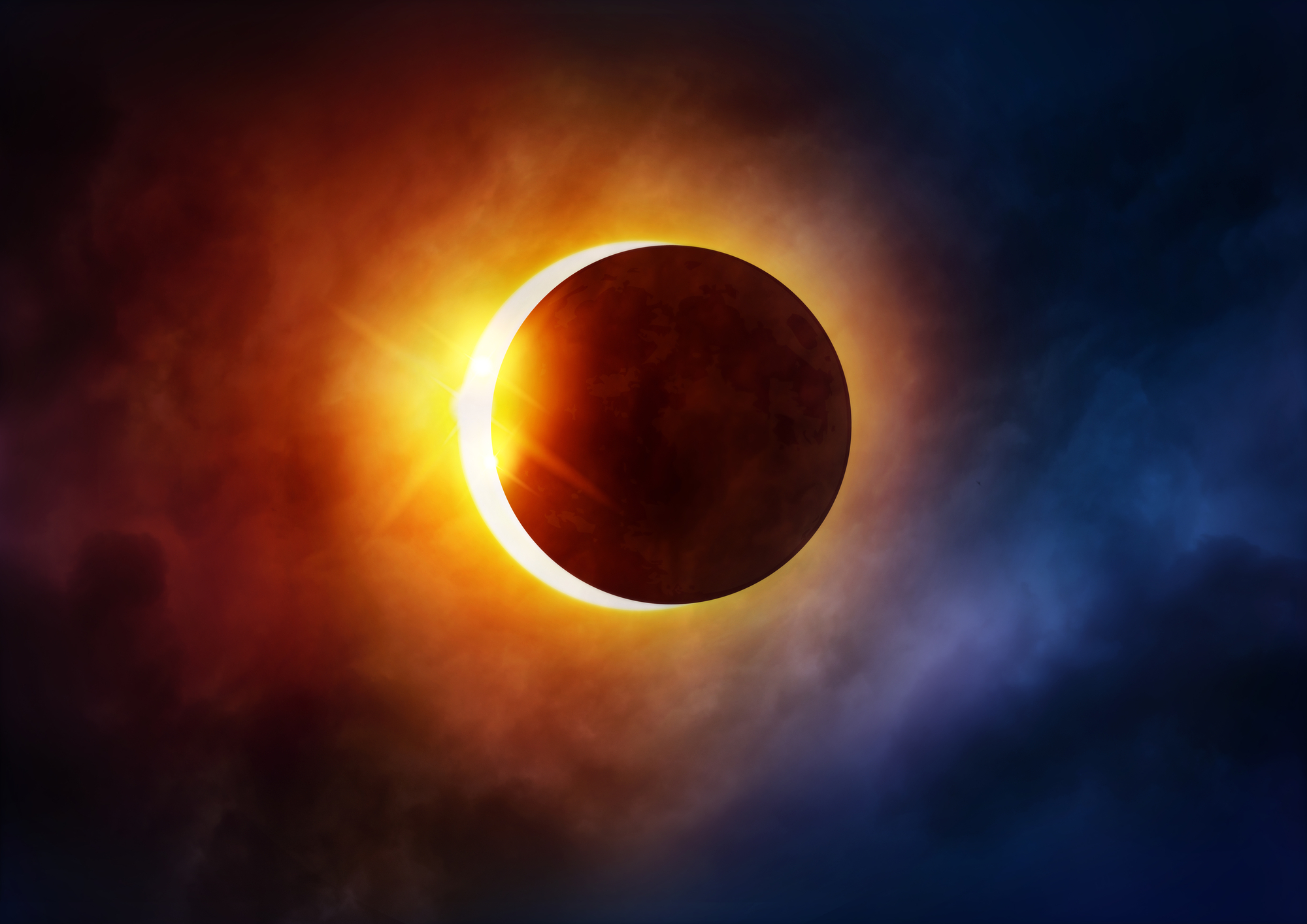Will the total solar eclipse visible in New York on April 8th impact your solar energy system in any way?
The short answer is NO. The National Resources Defense Council reassures everyone that “we don’t have to worry about systems failing or homes going dark while the sun ducks behind the moon”.
TEMPORARY DARKNESS. Although it will be an extraordinary event –the first total solar eclipse visible in New York State in nearly a century– when the moon passes in front of the sun, blocking it, the temporary darkness will be ordinary, just like any darkness on a cloudy or snowy day or during the dark of night itself and will have no impact on the functioning of your solar energy system. On Long Island, individual residential and commercial systems are grid-tied, so grid power is designed to kick in just as it does at night or under cloudy conditions. During the “slightly dark sky” caused by the eclipse on Long Island, you will simply collect less sun than you would on a typical day, a little more than an hour less.
ABOUT THE ECLIPSE. To be specific, the total solar eclipse taking place on April 8th will be visible on Long Island just after 3PM. While Long Island is not directly in the “path of totality,” we will still witness a “slightly dark sky” in daytime, about 88% coverage.
THE LONGER ANSWER. While the short answer about any individual effect is NO, the longer answer, however, is that the eclipse will somewhat impact the collective solar energy generated in the U.S. The eclipse will temporarily require greater power from the grid at that time through other sources. Keep in mind that solar energy accounts for much more of our power today than it did during the last total eclipse on our planet in 2017 (not visible in New York state).
Still, even for those who live directly in the within the “path of totality” in the U.S., there will be little or no OVERALL impact because sources of power other than solar, including natural gas and hydropower, supplants solar during any short-term loss of solar power, according to Melissa Lott, professor of professional practice at the Columbia Climate School at New York’s Columbia University. “The course, timing and duration of an eclipse are all predictable, unlike a natural disaster or other weather emergency,” USA TODAY reports. “With an eclipse, ‘we know the path it’s going to take. We have really good information to predict how long it’s going to last,’ said Lott; ‘this means utility companies know what to expect and can compensate.'”
It’s also easy to look back at the most recent example, only seven years ago. During the 2017 total solar eclipse (New York was not in its path then), there were no major issues for utilities in North America. “What was predicted versus what happened was pretty dead-on,” said Lott, “which should quell any lingering uncertainty.”
ECLIPSE SAFETY. If you look at an eclipse directly, you won’t feel any immediate pain, yet the sun’s powerful energy can still permanently damage your retina and your vision, according to experts. Even a very quick look at a solar eclipse can burn your retina, irreversibly. While the safety of other methods including special glasses can be iffy (see Q&A), pinhole cameras used correctly are safe because they allow viewing of reflected light not looking at the light itself. Read this special ECLIPSE SAFETY Q&A presented by Avnish Deobhakta, MD, Associate Professor of Ophthalmology at the New York Eye and Ear Infirmary of Mount Sinai. He explains how to safely look at a solar eclipse and the potential harm that can occur if you do not follow basic precautions for viewing this spectacle.
Learn more about the April 8, 2024 eclipse at Eclipse2024.org or at the “I Love New York” eclipse viewing site HERE.

